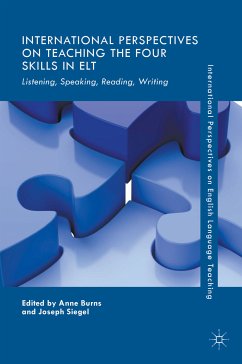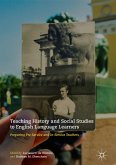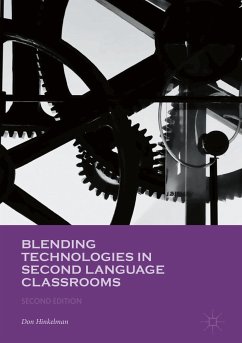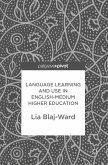This book offers a range of perspectives and insights from around the world on the teaching and learning of listening, speaking, reading and writing. It brings together contributors from across six continents, who analyse a wide range of teaching and learning contexts, including primary, secondary, tertiary, private, and adult ESL/EFL classes. In doing so, they provide locally relevant accounts that nonetheless resonate with other contexts and wider concerns. This informative and practical edited collection will appeal to students and scholars who are interested in the four building blocks of language learning, as well as language education and teacher education.
Anne Burns is Professor of TESOL at the University of New South Wales, Australia, and Professor Emerita, at Aston University, UK. She has published extensively on teaching speaking, action research and language teacher education.
Joseph Siegel is Senior Lecturer in the School of Humanities, Education and Social Science at Örebro University, Sweden. His research interests include action research, listening pedagogy, contextual education comparisons and pragmatic interaction.
Dieser Download kann aus rechtlichen Gründen nur mit Rechnungsadresse in A, B, BG, CY, CZ, D, DK, EW, E, FIN, F, GR, HR, H, IRL, I, LT, L, LR, M, NL, PL, P, R, S, SLO, SK ausgeliefert werden.
"After reading it my expectations were fulfilled and I closed the book with many new ideas that had caught my attention. ... this volume provides the reader with an idea of how different perspectives and approaches are possible when tackling teaching problems and how these innovations might be implemented across contexts. This volume may be interesting for teacher-educators ... . It might also be attractive to teacher researchers, as it could prove a practical resource for their own research projects." (María Fernanda Rojas, Argentinian Journal of Applied Linguistics, Vol. 7 (2), November, 2019)
"A fascinating collection of testimonies from English teachers all over the world and their experiences on teaching the four skills. ... International Perspectives on Teaching the Four Skills in ELT: Listening, Speaking, Reading, Writing is a compelling read for both novice English teachers and experienced ones. ... this volume is highly recommendable and a good read." (Carla Florencia Lescano, Argentinian Journal of Applied Linguistics, Vol. 7 (1), May, 2019)
"A fascinating collection of testimonies from English teachers all over the world and their experiences on teaching the four skills. ... International Perspectives on Teaching the Four Skills in ELT: Listening, Speaking, Reading, Writing is a compelling read for both novice English teachers and experienced ones. ... this volume is highly recommendable and a good read." (Carla Florencia Lescano, Argentinian Journal of Applied Linguistics, Vol. 7 (1), May, 2019)
Es gelten unsere Allgemeinen Geschäftsbedingungen: www.buecher.de/agb
Impressum
www.buecher.de ist ein Internetauftritt der buecher.de internetstores GmbH
Geschäftsführung: Monica Sawhney | Roland Kölbl | Günter Hilger
Sitz der Gesellschaft: Batheyer Straße 115 - 117, 58099 Hagen
Postanschrift: Bürgermeister-Wegele-Str. 12, 86167 Augsburg
Amtsgericht Hagen HRB 13257
Steuernummer: 321/5800/1497
USt-IdNr: DE450055826
Bitte wählen Sie Ihr Anliegen aus.
Rechnungen
Retourenschein anfordern
Bestellstatus
Storno









